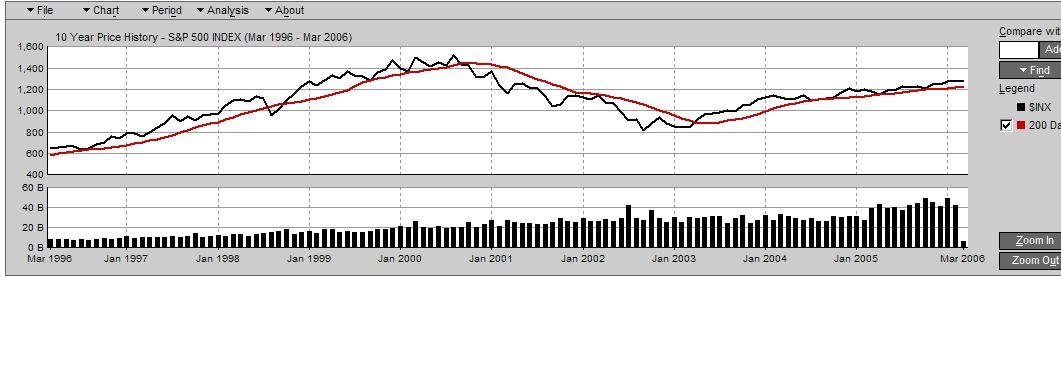Here's another example of market timing that has a track record and academic review (which gives the lie to the claim that "no studies have shown that market timing works.") See Mark Hulbert's article:
http://tinyurl.com/pofgw
This mid-term indicator has been evaluated since 1968 and has been shown to account for more thant 40% of differences in the (US equity) market's return over a four-year period.
Here are Hulbert's conclusions for the next four years based on the current reading of the VLMAP:
"The VLMAP currently stands at 35%, a relatively low number. Fewer than 5% of readings since the mid 1960s have been any lower.
What four-year return does a 35% VLMAP translate into? The econometric model that most closely fits past relationships between VLMAP and the Value Line Geometric Index suggests that this index will be 12% lower in four years' time.
To be sure, this result isn't quite as bad as it seems. The Value Line Geometric Index is constructed in such a way that it understates the return a portfolio would earn by investing in the 1,700 stocks that make up that index. So a 12% decline in the Value Line Geometric doesn't mean that the average investor must also lose that much.
Still, no matter how you slice it, a VLMAP of 35% does not hold out the prospect of very impressive overall returns between now and March 2010."
This agrees with low expectations for equity returns in the coming period (variously defined) put out by Mauldin, Stein & DeMuth, and John Hussman, among others. It concurs with my advice to the OP that stocks are still highly priced and now is a time to wait out the market, whether in short-term fixed or elsewhere.

